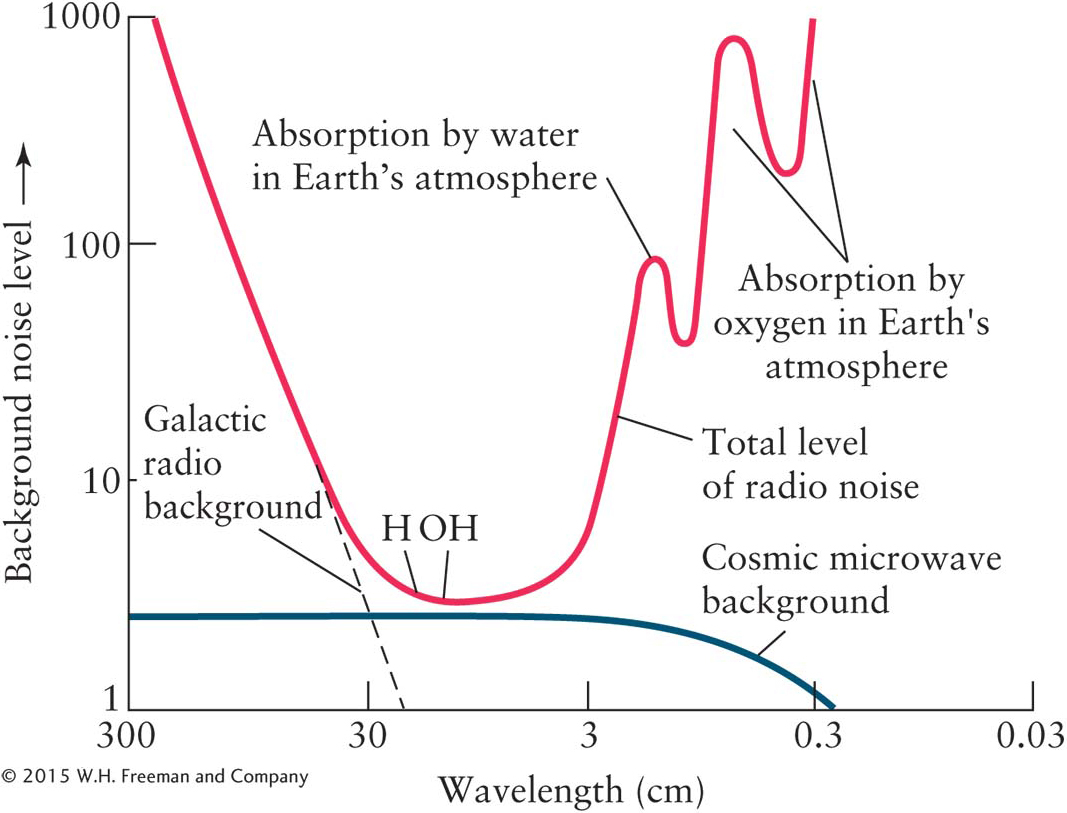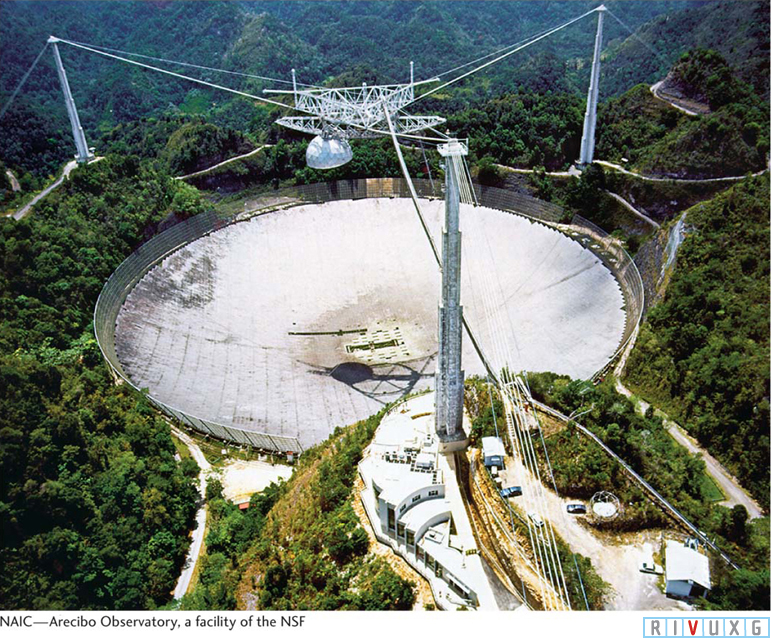15-4 Searches for advanced civilizations try to detect their radio signals
 We have begun discovering terrestrial exoplanets sufficiently like Earth orbiting stars sufficiently like the Sun so that many astronomers believe it is only a matter of time before we detect the signs of liquid water on some of those worlds. That will set off a flood of effort to try and detect life on them. In the meantime, we are looking for signs of life via radio emission from advanced civilizations on worlds we presently cannot detect. These searches began in the 1950s and 1960s, long before the technology to locate exoplanets was available.
We have begun discovering terrestrial exoplanets sufficiently like Earth orbiting stars sufficiently like the Sun so that many astronomers believe it is only a matter of time before we detect the signs of liquid water on some of those worlds. That will set off a flood of effort to try and detect life on them. In the meantime, we are looking for signs of life via radio emission from advanced civilizations on worlds we presently cannot detect. These searches began in the 1950s and 1960s, long before the technology to locate exoplanets was available.
As we have seen, radio waves can travel immense distances without being significantly altered by the interstellar medium. Because they penetrate gas and dust, radio waves are a logical choice for interstellar communication. Even if alien civilizations are not trying to communicate with us, they probably use radio waves in their own technology. But at what frequencies should we look to maximize the odds of detecting alien signals?

We could try random frequencies in the hopes of hearing something—
475
476

Even if only a few alien civilizations exist in our neighborhood of the Galaxy, we have the technology to detect radio transmissions from them. The figure at the beginning of this chapter shows the region of the Galaxy from which radio signals similar to the kinds of transmissions we humans make could be detected. Since Project Ozma was carried out, the number of organized searches for signals from extraterrestrials approaches 100. SETI searches use radio telescopes (Figure 15-9) along with sophisticated electronic equipment and powerful computers to conduct both targeted searches and all-
Indeed, because so much data are available to analyze, one SETI project called SETI@home (http:/
477
 Occasionally, a SETI project does detect powerful or unusual signals from space. However, because none of these signals are ever repeated, SETI researchers do not yet believe they have discovered any extraterrestrial civilization.
Occasionally, a SETI project does detect powerful or unusual signals from space. However, because none of these signals are ever repeated, SETI researchers do not yet believe they have discovered any extraterrestrial civilization.
The detection of a message from an alien civilization would be one of the greatest events in human history. Communicating with aliens could dramatically change the course of civilization on Earth through the sharing of scientific information or an awakening of social or humanistic enlightenment. In only a few years, our industry and social structure could advance centuries into the future. The effects of such change would touch every person on Earth.
 Radio Telescope Used for SETI The Arecibo Observatory’s radio telescope, with a diameter of 305 m (1000 ft), is the largest singl
Radio Telescope Used for SETI The Arecibo Observatory’s radio telescope, with a diameter of 305 m (1000 ft), is the largest singl